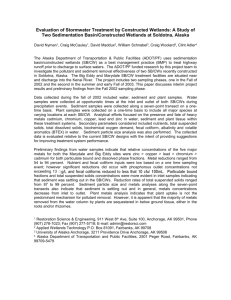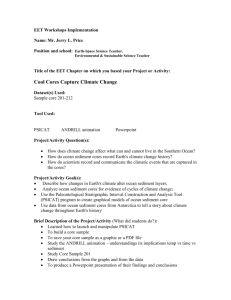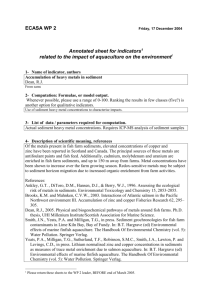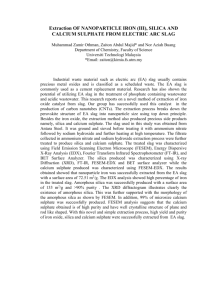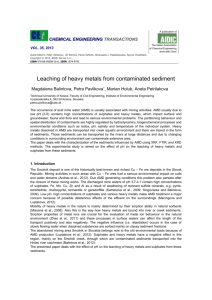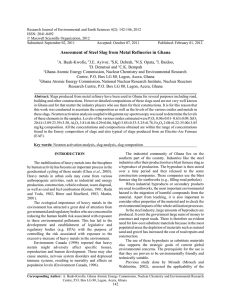View/Open
advertisement
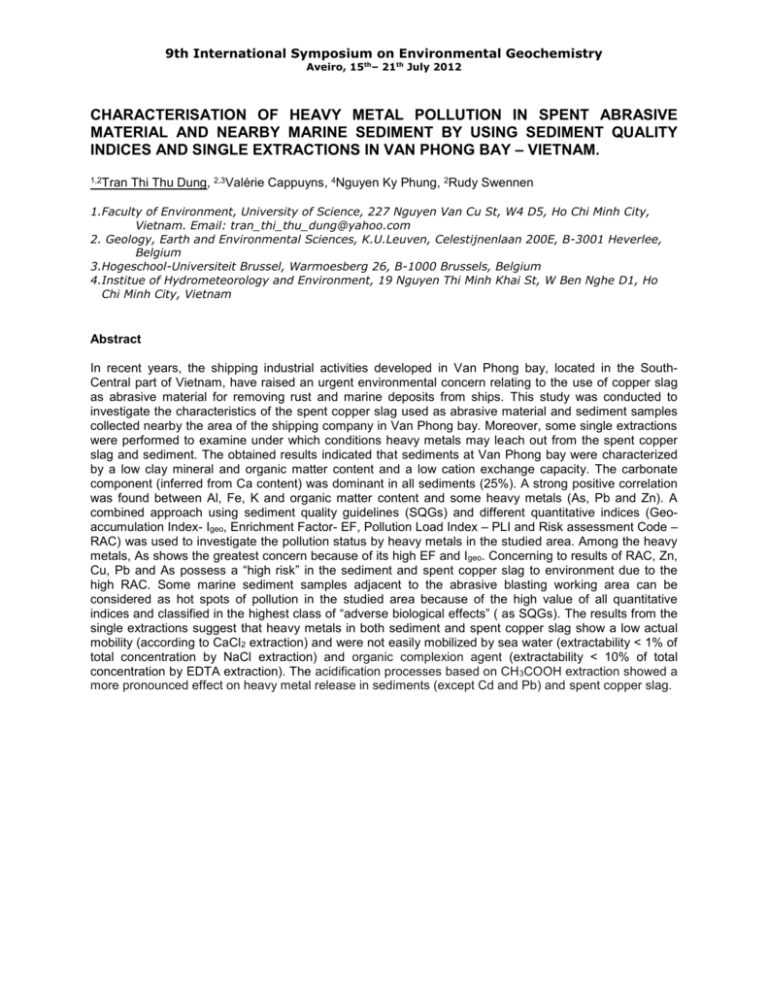
9th International Symposium on Environmental Geochemistry Aveiro, 15th– 21th July 2012 CHARACTERISATION OF HEAVY METAL POLLUTION IN SPENT ABRASIVE MATERIAL AND NEARBY MARINE SEDIMENT BY USING SEDIMENT QUALITY INDICES AND SINGLE EXTRACTIONS IN VAN PHONG BAY – VIETNAM. 1,2Tran Thi Thu Dung, 2,3Valérie Cappuyns, 4Nguyen Ky Phung, 2Rudy Swennen 1.Faculty of Environment, University of Science, 227 Nguyen Van Cu St, W4 D5, Ho Chi Minh City, Vietnam. Email: tran_thi_thu_dung@yahoo.com 2. Geology, Earth and Environmental Sciences, K.U.Leuven, Celestijnenlaan 200E, B-3001 Heverlee, Belgium 3.Hogeschool-Universiteit Brussel, Warmoesberg 26, B-1000 Brussels, Belgium 4.Institue of Hydrometeorology and Environment, 19 Nguyen Thi Minh Khai St, W Ben Nghe D1, Ho Chi Minh City, Vietnam Abstract In recent years, the shipping industrial activities developed in Van Phong bay, located in the SouthCentral part of Vietnam, have raised an urgent environmental concern relating to the use of copper slag as abrasive material for removing rust and marine deposits from ships. This study was conducted to investigate the characteristics of the spent copper slag used as abrasive material and sediment samples collected nearby the area of the shipping company in Van Phong bay. Moreover, some single extractions were performed to examine under which conditions heavy metals may leach out from the spent copper slag and sediment. The obtained results indicated that sediments at Van Phong bay were characterized by a low clay mineral and organic matter content and a low cation exchange capacity. The carbonate component (inferred from Ca content) was dominant in all sediments (25%). A strong positive correlation was found between Al, Fe, K and organic matter content and some heavy metals (As, Pb and Zn). A combined approach using sediment quality guidelines (SQGs) and different quantitative indices (Geoaccumulation Index- Igeo, Enrichment Factor- EF, Pollution Load Index – PLI and Risk assessment Code – RAC) was used to investigate the pollution status by heavy metals in the studied area. Among the heavy metals, As shows the greatest concern because of its high EF and Igeo. Concerning to results of RAC, Zn, Cu, Pb and As possess a “high risk” in the sediment and spent copper slag to environment due to the high RAC. Some marine sediment samples adjacent to the abrasive blasting working area can be considered as hot spots of pollution in the studied area because of the high value of all quantitative indices and classified in the highest class of “adverse biological effects” ( as SQGs). The results from the single extractions suggest that heavy metals in both sediment and spent copper slag show a low actual mobility (according to CaCl2 extraction) and were not easily mobilized by sea water (extractability < 1% of total concentration by NaCl extraction) and organic complexion agent (extractability < 10% of total concentration by EDTA extraction). The acidification processes based on CH 3COOH extraction showed a more pronounced effect on heavy metal release in sediments (except Cd and Pb) and spent copper slag.
